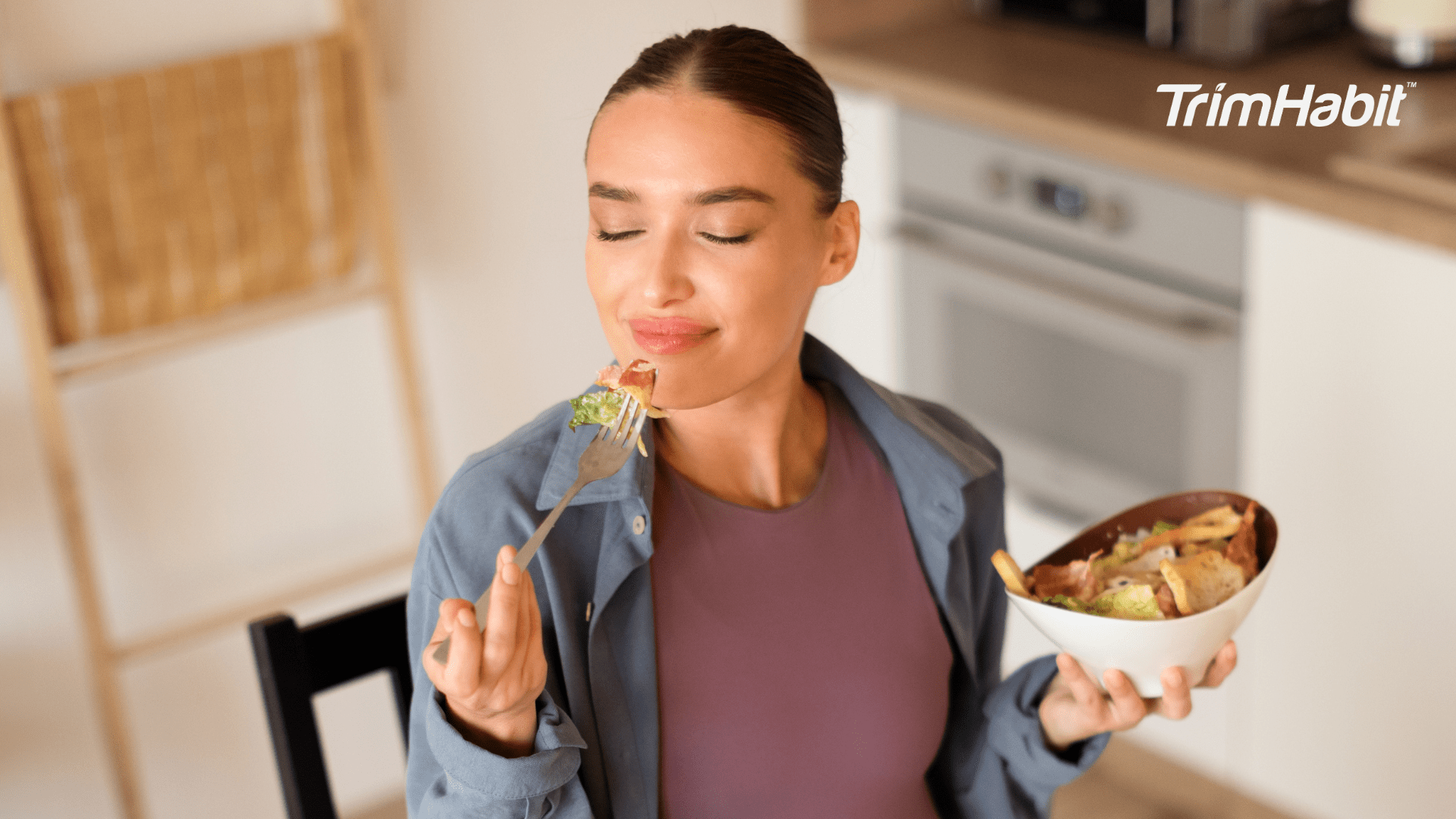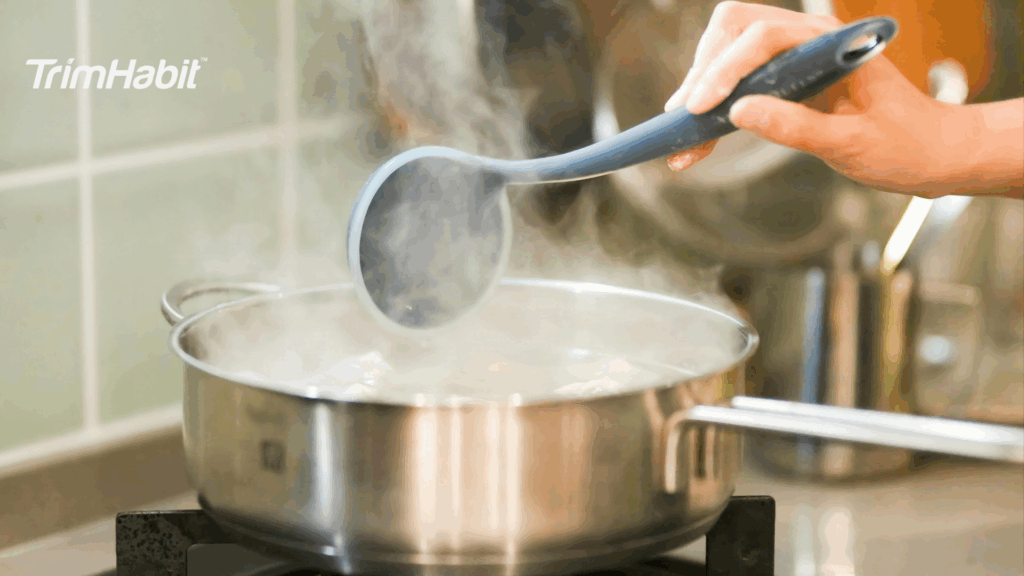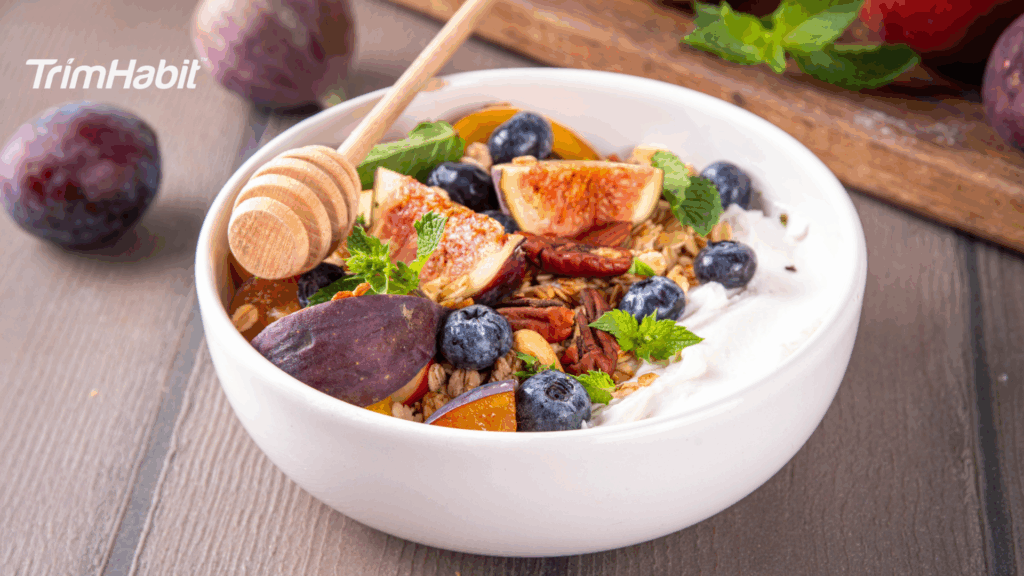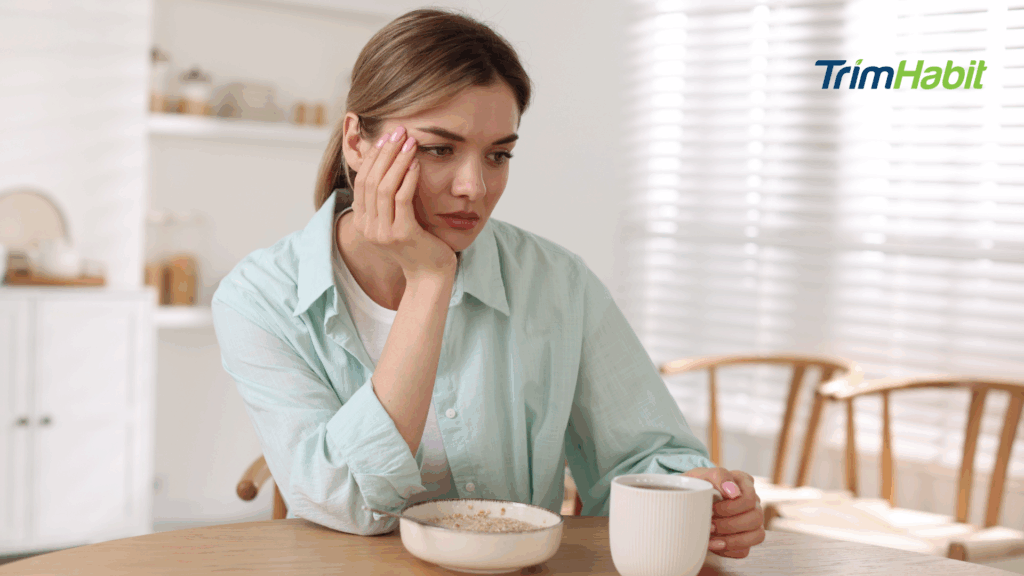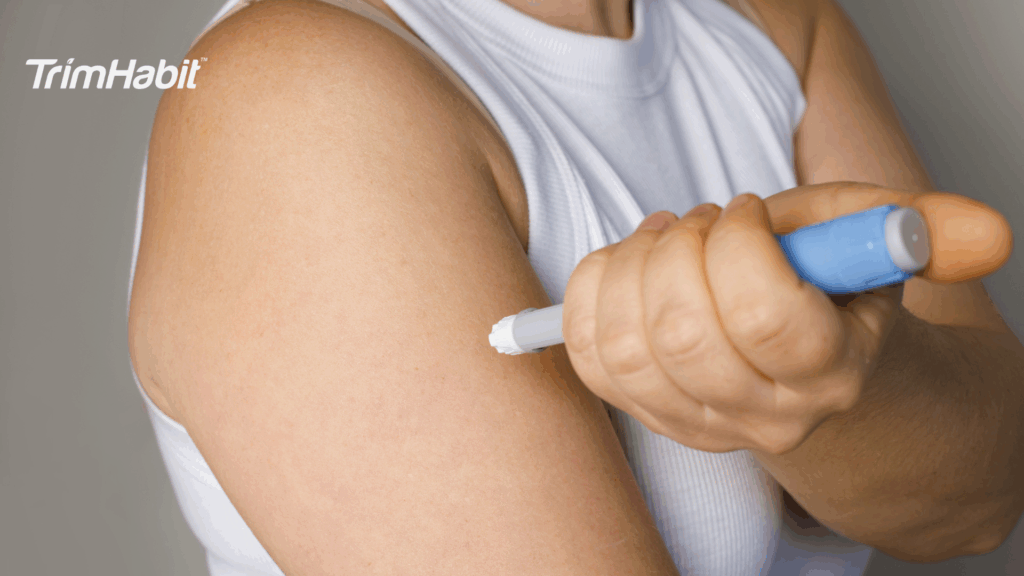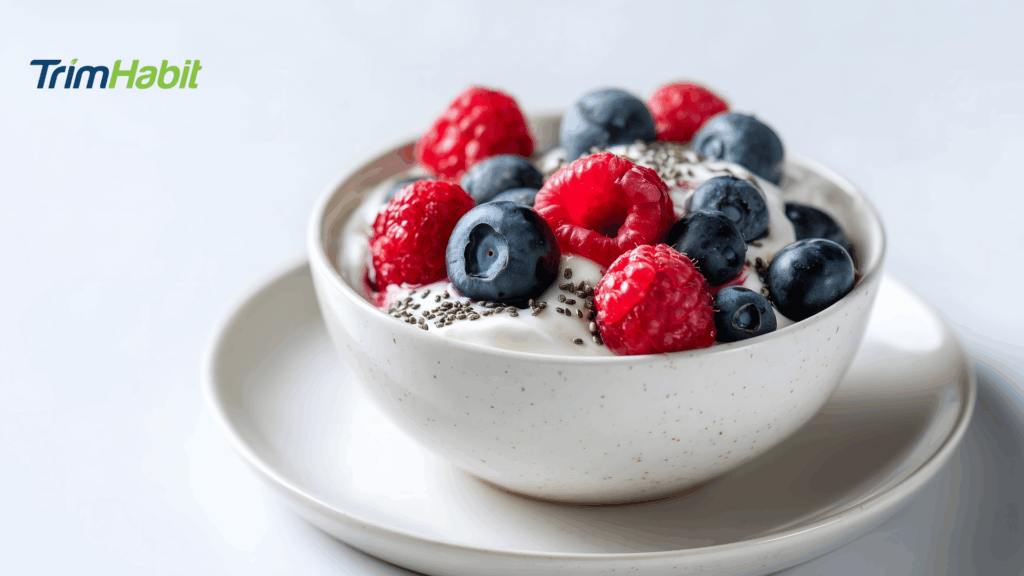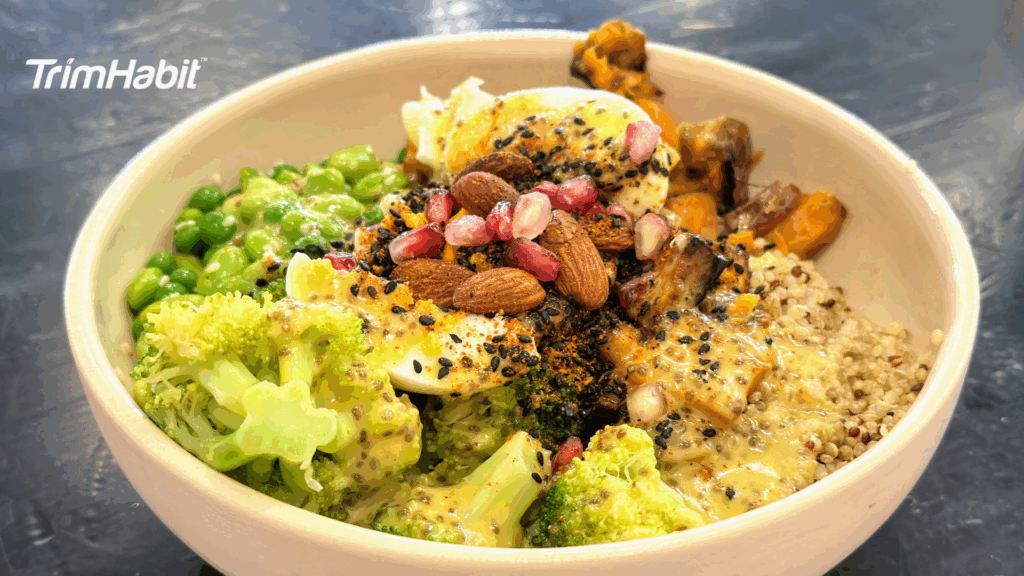Starting semaglutide is a meaningful step toward better health, whether you’re focused on weight management, blood sugar control, or both. Yet with the promise of progress often comes new questions, especially about how to structure meals.
One of the most common is simple but important: When should I eat after my semaglutide shot?
Semaglutide is often recommended on an empty stomach, and waiting at least 30 minutes before eating may support absorption and effectiveness. Still, the answer isn’t one-size-fits-all, since semaglutide affects each person differently, influencing appetite, digestion, and eating patterns in unique ways.
In this article, we will explore what happens in your body after an injection, how eating too soon or waiting too long can shape side effects, and the best strategies for timing meals so you feel your best while staying on track with your health.
Understanding How Semaglutide Works
Semaglutide has become one of the most talked-about medications for weight management and type 2 diabetes, but many people are still unclear about how it works in the body. Unlike traditional weight-loss aids that focus on suppressing appetite alone, semaglutide works at a deeper, hormonal level—helping to regulate blood sugar, slow digestion, and influence the brain’s perception of hunger1.
At its core, semaglutide is a GLP-1 receptor agonist. Semaglutide is the active ingredient in several FDA-approved medications for weight management and diabetes, including Wegovy, Ozempic, and Rybelsus. These medications mimic the GLP-1 hormone to regulate blood sugar and appetite. GLP-1 (glucagon-like peptide-1) is a naturally occurring hormone your body releases after eating. It signals the pancreas to release insulin, lowers glucagon (a hormone that raises blood sugar), and helps you feel full.
Here’s what happens when semaglutide enters the body:
1. Improves Blood Sugar Control
Semaglutide helps the pancreas release insulin only when blood sugar levels are elevated, reducing spikes without causing dangerous drops. At the same time, it suppresses glucagon, which prevents the liver from producing excess glucose. This dual action makes it highly effective for people with type 2 diabetes. While semaglutide helps prevent high blood sugar, users should also be aware of the risk of low blood sugar, especially if combined with other diabetes medications.
2. Slows Down Digestion
One reason people feel fuller on semaglutide is that it delays how quickly food leaves the stomach. Because semaglutide slows gastric emptying, some people may experience GI symptoms such as nausea, bloating, or stomach discomfort. This “slower emptying” effect reduces appetite and can naturally lead to smaller portion sizes, supporting weight loss without constant hunger.
3. Reduces Hunger Signals in the Brain
Semaglutide interacts with appetite-regulating centers in the brain, helping reduce cravings and the urge to snack. This effect leads to appetite suppression, making reducing calorie intake easier and supporting weight loss. Over time, this makes it easier to maintain healthier eating habits and sustain weight loss results.
4. Supports Long-Term Weight Management
Semaglutide doesn’t just create short-term changes because it targets multiple systems—blood sugar regulation, digestion, and brain signaling. Instead, it promotes healthier eating patterns, leading to sustainable weight loss and improved overall health when combined with balanced nutrition and lifestyle changes. Combining semaglutide with healthy eating and lifestyle changes is key to achieving successful weight loss and maintaining results over time.
General Guidelines On Eating After Your Shot
Semaglutide can change how your body processes food, so knowing when and what to eat after your injection is essential for comfort, energy, and long-term success. When taking semaglutide, following dietary guidelines can help optimize your results and minimize potential side effects. While there isn’t a one-size-fits-all rule, these general guidelines can help you avoid side effects and support your health.
1. Wait Until You Feel Ready
You don’t need to eat immediately after your shot. Some people feel mild nausea if they eat right away. Give your body a little time—usually 30 minutes to an hour—before having a meal, unless your doctor has given specific instructions. Always follow your prescribed dose and timing as directed by your healthcare provider.
2. Start with Small, Balanced Portions
Semaglutide slows down digestion, so large or heavy meals may cause discomfort. Opt for smaller portions with lean protein, fiber-rich vegetables, and healthy fats to satisfy you without overeating. A balanced diet with these components can help manage gastrointestinal side effects and support your health goals while on semaglutide.
3. Avoid Greasy or High-Sugar Foods
Foods that are fried, overly fatty, or loaded with sugar can worsen nausea, bloating, or stomach upset. Foods with unhealthy fats and added sugars should be limited to help reduce these side effects. Instead, choose lighter meals such as grilled chicken with vegetables, oatmeal with berries, or a smoothie with protein.
4. Stay Hydrated
Drink water throughout the day, especially after your injection. Staying hydrated is essential for reducing side effects and supporting your overall health while on semaglutide. Sometimes, mild dehydration can feel like hunger or make nausea worse. Herbal teas or electrolyte-rich drinks (without added sugar) are also good options.
5. Listen to Your Body’s Cues
Everyone’s response to semaglutide is different. Some people may feel full quickly, while others initially notice little change. Pay attention to your hunger and fullness signals, and don’t force yourself to finish a plate if you’re satisfied. Eat slowly and pay attention to your body’s signals to help avoid overeating and reduce the risk of nausea.
6. Plan Your Meals Around Your Routine
Since semaglutide works gradually over the week, the exact timing of your injection doesn’t have to dictate strict mealtimes. Instead, focus on building a consistent eating pattern—three balanced meals with one or two healthy snacks, if needed. Maintaining a regular schedule for injections and meals can help stabilize your appetite and improve treatment outcomes.
When Should I Eat After My Semaglutide Shot?
If you’ve recently started semaglutide, you may be wondering when the best time is to eat after taking your shot. The timing of eating after your semaglutide injection can affect how you feel and how well the medication works. Because semaglutide works differently from traditional medicines, it can affect your appetite, digestion, and how your body responds to food. The good news is, there’s no strict rule—but there are smart guidelines that can help you stay comfortable and get the best results.
Do You Need to Eat Immediately After Semaglutide?
No. Unlike some medications, semaglutide doesn’t require food to “activate” or prevent side effects. Unless your doctor recommends it, you don’t have to eat right after your injection. Eating too soon can sometimes worsen nausea. Following your treatment plan and aftercare instructions can help minimize side effects and support your health goals.
The Best Timing
Many people find it helpful to wait at least 30 minutes to an hour after their shot before having a meal. This gives your body time to adjust and reduces the chance of stomach upset. Waiting until your next regular mealtime is fine if you’re not hungry.
Taking your injection on the same day each week and maintaining consistent meal timing can help you develop a routine that supports your health.
Factors That Can Affect Timing
A few personal factors can influence whether you should wait a little longer or eat sooner after your injection. Meal timing and recommendations may need to be adjusted based on your response and medical needs.
1. Individual Tolerance
Some people feel fine eating right away, while others experience mild nausea if they eat too soon. Your own body’s response will guide how long you should wait.
2. Meal Size & Composition
Heavier meals—especially those high in fat or fried foods—can be harder to digest on semaglutide. If you plan to eat something richer, giving yourself extra time after your shot may help reduce discomfort. Certain medical conditions may also require specific dietary adjustments when using semaglutide.
3. Time of Day
If you inject semaglutide in the morning, you may naturally line it up with breakfast. If you take it in the evening, your eating window may look different. Your routine matters, so adjusting based on when you usually feel most comfortable eating is important. If you experience a missed dose, consult your healthcare provider for guidance, as it can affect your eating and medication schedule.
4. Other Medications
If you’re taking additional prescriptions, the timing of those medications and whether they should be taken with food can affect when it’s best to eat after your shot. Always check with your healthcare provider if you’re unsure.
5. Activity Level
If you plan a workout, eating a small snack with protein and complex carbs before or after exercise may be helpful. Incorporating regular exercise and physical activity as part of your overall exercise plan is important to support weight management and enhance the effectiveness of your treatment. Semaglutide can change appetite signals, so don’t skip fueling your body when you need energy.
What Should I Eat After My Semaglutide Shot?
Since semaglutide slows digestion and changes how your body signals hunger, choosing the right foods can make a big difference in how you feel.
Following a healthy diet and combining diet and exercise are essential to support your treatment with semaglutide, maximize weight loss, and improve overall health.
1. Focus on Balanced, Light Meals
After your injection, stick to meals that are easy on the stomach but still nourishing. A good balance includes:
- Lean protein (chicken, fish, eggs, tofu) for steady energy
- Fiber-rich vegetables (broccoli, spinach, zucchini, carrots) to aid digestion
- Healthy fats (avocado, nuts, olive oil) to keep you satisfied
Choosing meals that support semaglutide can help optimize your results and minimize side effects.
Example meal: Grilled salmon with steamed broccoli and quinoa.
2. Choose Gentle, Easy-to-Digest Foods
Since semaglutide slows stomach emptying, heavy meals can feel uncomfortable. Eating small meals throughout the day can help manage gastrointestinal side effects and maintain energy levels. Instead, go for lighter options like:
- Oatmeal with berries and chia seeds
- Greek yogurt with sliced fruit
- A protein smoothie with banana and spinach
3. Stay Hydrated
Water is your best friend on semaglutide. Sip throughout the day to prevent dehydration, which can worsen nausea or fatigue. Herbal teas and sugar-free electrolyte drinks are also good choices.
4. Avoid Foods That May Trigger Discomfort
Some foods can worsen nausea, bloating, or indigestion:
- Greasy, fried foods
- Sugary desserts or drinks
- Carbonated sodas
- Oversized portions
- Alcohol: It’s best to avoid alcohol while on semaglutide, as it can interfere with the medication and increase side effects
5. Think Small & Frequent
Instead of three large meals, you may feel better eating smaller portions more often. This helps prevent fullness from becoming uncomfortable while still keeping your energy steady.
Sample One-Day Meal Plan After Your Semaglutide Shot
Breakfast
Oatmeal Bowl
- ½ cup rolled oats cooked in unsweetened almond milk
- Topped with blueberries, chia seeds, and a drizzle of almond butter
- Herbal tea or water on the side
Light, fiber-rich, and gentle on digestion.
Lunch
Grilled Chicken Salad
- Grilled chicken breast (about 3–4 oz)
- Mixed greens, cucumbers, cherry tomatoes, and avocado slices
- Light olive oil & lemon dressing
- Sparkling water (unsweetened)
Balanced protein, healthy fats, and veggies without being heavy.
Snack
Greek Yogurt with Fruit
- ½ cup plain Greek yogurt
- A few sliced strawberries or apple slices
- Sprinkle of ground flaxseed for fiber
Protein-rich to keep you full, easy to digest.
Dinner
Baked Salmon with Quinoa & Steamed Broccoli
- 3–4 oz baked salmon (seasoned with lemon & herbs)
- ½ cup cooked quinoa
- Steamed broccoli with a drizzle of olive oil
Protein + complex carbs + fiber for a satisfying but light evening meal.
Optional Evening Snack (if hungry)
Apple Slices with Peanut Butter
- A few apple slices
- 1 tbsp natural peanut butter
Small, satisfying, and prevents nighttime hunger without overeating.
Conclusion
Finding the right time to eat after your semaglutide shot is less about strict rules and more about paying attention to your body while following medical guidance. Waiting at least 30 minutes before meals can often support absorption and reduce discomfort, but the best timing depends on your individual response, appetite, and daily routine. If you notice how your body reacts and align your eating habits with your treatment plan, you can make semaglutide work more smoothly for you and your long-term health.

